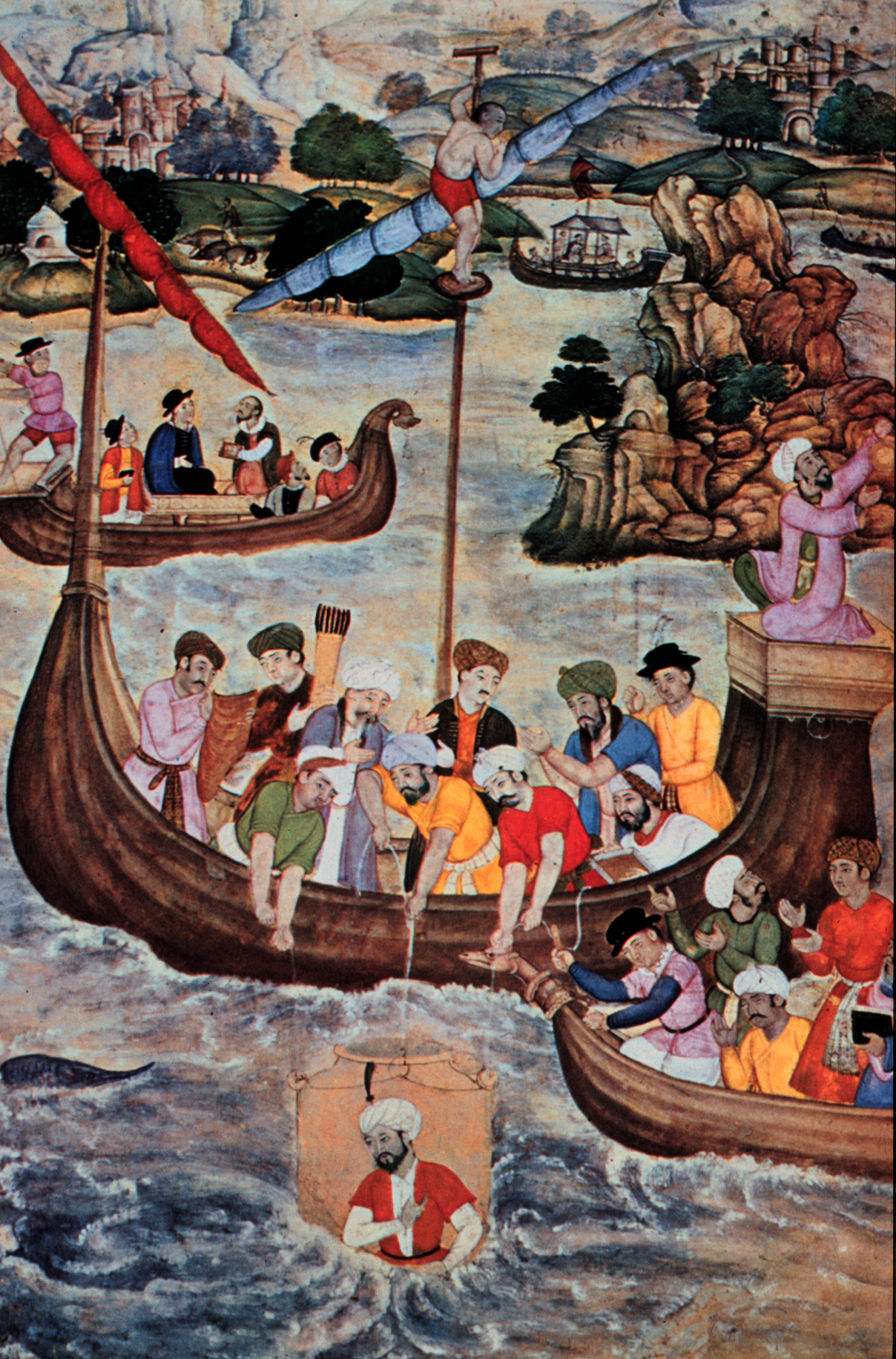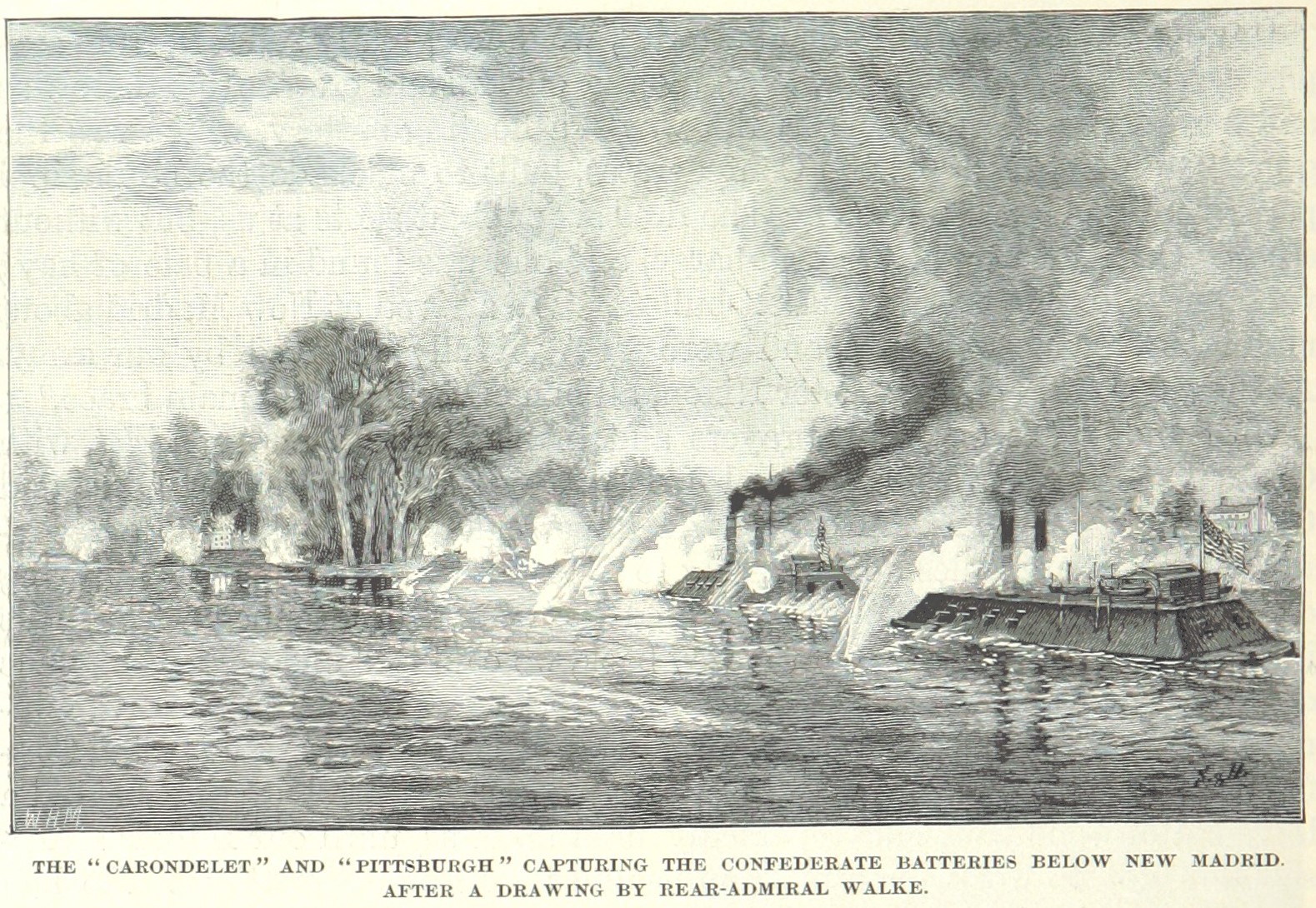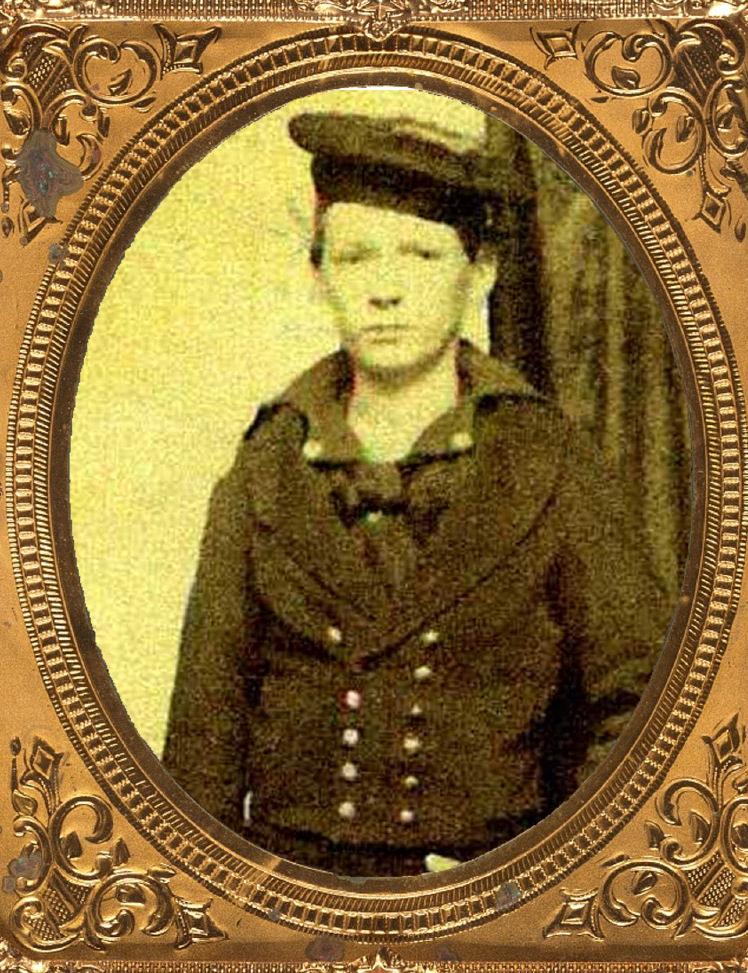|
James Buchanan Eads
Captain James Buchanan Eads (May 23, 1820 – March 8, 1887) was a world-renowned American civil engineer and inventor, holding more than 50 patents. Eads' great Mississippi River Bridge at St. Louis was designated a National Historic Landmark by the Department of the Interior in 1964 and on October 21, 1974 was listed as a National Historic Civil Engineering Landmark by the American Society of Civil Engineers. It was also awarded a Special Award of Recognition by the American Institute of Steel Construction in 1974 on the 100th anniversary of its entry into service. Eads' design for the jetties of the south pass of the Mississippi river was also designated as National Historic Civil Engineering Landmarks in 1982. Early life and education Eads was born in Lawrenceburg, Indiana, and named for his mother's cousin, future President of the United States James Buchanan. Eads' father, Thomas C. Eads pursued a fortune to no avail and the family moved several times. Eads grew up in S ... [...More Info...] [...Related Items...] OR: [Wikipedia] [Google] [Baidu] |
Lawrenceburg, Indiana
Lawrenceburg is a city in Dearborn County, Indiana, United States. The population was 5,042 at the 2010 census. The city is the county seat and largest city of Dearborn County. Lawrenceburg is in southeast Indiana, on the Ohio River west of Cincinnati. History Founded in 1802, Lawrenceburg was named for the maiden name of the wife of founder Samuel C. Vance. In the 19th century, Lawrenceburg became an important trading center for riverboats on the Ohio River. The Dearborn County Courthouse, Downtown Lawrenceburg Historic District, Hamline Chapel United Methodist Church, the Liberty Theatre, the Dunn Home, The Daniel S. Major House, and Vance-Tousey House are listed on the National Register of Historic Places. Geography Lawrenceburg is located at (39.096015, -84.857783). The City of Lawrenceburg is located in the Ohio River Valley and is situated on the banks of the Ohio River. Lawrenceburg is located on the west-side of the Greater Cincinnati, Ohio tri-state metro area. A ... [...More Info...] [...Related Items...] OR: [Wikipedia] [Google] [Baidu] |
Diving Bell
A diving bell is a rigid chamber used to transport divers from the surface to depth and back in open water, usually for the purpose of performing underwater work. The most common types are the open-bottomed wet bell and the closed bell, which can maintain an internal pressure greater than the external ambient. Diving bells are usually suspended by a cable, and lifted and lowered by a winch from a surface support platform. Unlike a submersible, the diving bell is not designed to move under the control of its occupants, nor to operate independently of its launch and recovery system. The wet bell is a structure with an airtight chamber which is open to the water at the bottom, that is lowered underwater to operate as a base or a means of transport for a small number of divers. Air is trapped inside the bell by pressure of the water at the interface. These were the first type of diving chamber, and are still in use in modified form. The closed bell is a pressure vessel for human ... [...More Info...] [...Related Items...] OR: [Wikipedia] [Google] [Baidu] |
USS Essex (1856)
USS ''Essex'' was a 1000-ton ironclad river gunboat of the United States Army and later United States Navy during the American Civil War. It was named for Essex County, Massachusetts. USS ''Essex'' was originally constructed in 1856 at New Albany, Indiana as a steam-powered ferry named ''New Era''. Service in Tennessee In September 1861 ''New Era'' was purchased by the United States Army for use in its Western Gunboat Flotilla and was modified into a 355-ton timberclad gunboat. In November 1861 USS ''New Era'' took part in an expedition up the Cumberland River. Shortly thereafter she was renamed USS ''Essex'' and received an upgrade to iron armor and various other alterations. On 11 January 1862, USS ''Essex'' engaged Confederate States Navy gunboats near Lucas Bend, Missouri. On 6 February 1862, she took part in the attack on Fort Henry, Tennessee and was badly damaged by Confederate gunfire. Battling the CSS ''Arkansas'' Commanding officer William D. Porter upgraded his sh ... [...More Info...] [...Related Items...] OR: [Wikipedia] [Google] [Baidu] |
USS Pittsburgh (1861)
USS ''Pittsburgh'' (often ''Pittsburg'') was a gunboat constructed for the Union Army by James B. Eads during the American Civil War, and transferred to the Union Navy in October 1862. She was commissioned in January 1862, Commander Egbert Thompson in command. Operational history Joining Flag Officer Andrew Hull Foote's Western Gunboat Flotilla in river patrol duty, ''Pittsburgh'' attacked Fort Donelson February 14, 1862, and was damaged by counter-fire. The support from the gunboats contributed greatly to the capture of the strategic fort two days later. Repaired, she attacked Island No. 10 on April 3, then ran its batteries by dark April 7, being lashed by a heavy thunderstorm as well as the island's 73 guns. This daring feat made it possible for her and to demolish batteries below New Madrid, Missouri that same day, clearing the way for the Army to cross the Mississippi River. ''Pittsburgh'' gave continued service in the lengthy series of operations which wrested control ... [...More Info...] [...Related Items...] OR: [Wikipedia] [Google] [Baidu] |
USS Mound City (1862)
USS ''Mound City'' was a gunboat built for service on the Mississippi River and its tributaries in the American Civil War. Originally commissioned as part of the Union Army's Western Gunboat Flotilla, she remained in that service until October 1862. Then the flotilla was transferred to the Navy and she became part of the Mississippi River Squadron, where she remained until the end of the war. While with the Western Gunboat Flotilla, ''Mound City'' took part in combat at Island No. 10, at Fort Pillow, and in an expedition on the White River in Arkansas. At Fort Pillow, she was rammed by Confederate vessels of the River Defense Fleet and averted sinking only by retreating into shoals. On the White River during the Battle of Saint Charles, a chance Confederate shot penetrated the steam drum of her engines, resulting in 105 of her sailors being killed. An additional forty-five crew members were reported wounded, primarily by scalding. The ship suffered only minor damage. After b ... [...More Info...] [...Related Items...] OR: [Wikipedia] [Google] [Baidu] |
USS Louisville (1862)
USS ''Louisville'' was a gunboat constructed for the U.S. Army by James B. Eads during the American Civil War. (While initially owned by the Army, the City-class gunboats were commanded by U.S. Navy officers, and were eventually transferred to the Navy.) ''Louisville'' was built at St. Louis, Missouri, by James B. Eads in 1861, under contract with the War Department for the price of $89,000. Designed by U.S. Navy "Constructor" (Naval Engineer) Samuel M. Pook, she was accepted 15 January 1862; and commissioned 16 January 1862, Commander Benjamin M. Dove, USN, in command. Despite being designed by naval personnel, budgetary concerns led the War Department to fund construction of ''Louisville'' with Army funds. As such, she was turned over to Army command upon completion and joined the Army's Mississippi River Squadron. Eventually the entire western river flotilla would be transferred to Navy command. Operational history ''Louisville'' assisted the Army in the capture of Fo ... [...More Info...] [...Related Items...] OR: [Wikipedia] [Google] [Baidu] |
USS Carondelet (1861)
USS ''Carondelet'' ( ) (1861) was a gunboat constructed for the War Department by James B. Eads during the American Civil War. It was named for the town where it was built, Carondelet, Missouri. ''Carondelet'' was designed for service on the western rivers, with a combination of shallow draft and variety of heavy guns (and a light howitzer), she was suited for riverside bombardment and ship-to-ship combat against Confederate gunboats. Built in Carondelet Missouri in 1861 USS ''Carondelet'', an ironclad river gunboat, was built in 1861 by James Eads and Co., St. Louis, Missouri, at the Union Iron Works, in Carondelet, Missouri under contract to the United States Department of War. ''Carondelet'' was commissioned 15 January 1862, at Cairo, Illinois, U.S. Navy Commander Henry A. Walke in command, and reported to Army's Western Gunboat Flotilla, commanded by U.S. Navy Flag Officer Andrew Hull Foote. Civil War service Union Army service Between January and October ... [...More Info...] [...Related Items...] OR: [Wikipedia] [Google] [Baidu] |
USS Cairo (1861)
USS ''Cairo'' is one of the first American ironclad warships built at the beginning of the U.S. Civil War. ''Cairo'' is the lead ship of the City-class gunboats and named for Cairo, Illinois. In June 1862, she captured the Confederate garrison of Fort Pillow on the Mississippi, enabling Union forces to occupy Memphis. As part of the Yazoo Pass Expedition, she was sunk on 12 December 1862, while clearing mines for the attack on Haines Bluff. ''Cairo'' was the first ship ever to be sunk by a mine remotely detonated by hand. The remains of ''Cairo'' can be viewed at Vicksburg National Military Park with a museum of its weapons and naval stores. Service in the American Civil War ''Cairo'' was built by James Eads and Co., Mound City, Illinois, in 1861, under contract to the United States Department of War. She was commissioned as part of the Union Army's Western Gunboat Flotilla, which had US Navy Lieutenant James M. Prichett in command. ''Cairo'' served with the Army's West ... [...More Info...] [...Related Items...] OR: [Wikipedia] [Google] [Baidu] |
USS Baron DeKalb (1861)
USS ''Baron DeKalb'' was a gunboat constructed for the Union Navy by James B. Eads during the American Civil War. USS ''Baron DeKalb'', named after General Baron DeKalb of Hüttendorf near Erlangen, in present-day Bavaria, was originally named ''Saint Louis'', and was one of seven City-class ironclads built at Carondelet, Missouri and Mound City, Illinois, for the Western Gunboat Flotilla. These ironclads were shallow draft with a center driven paddle wheel. They were partially armored and slow and very hard to steer in the currents of rivers. This ironclad was also vulnerable to plunging fire and also by hits in their un-armored areas. Called "Pook Turtles" for the designer, they did yeoman service through four years of war and were present at almost every battle on the Mississippi River and its tributaries. Built in St. Louis, Missouri in 1861 Originally built as ''St. Louis'', the stern wheel casemate gunboat was built by James B. Eads, at the Union Marine Works at Car ... [...More Info...] [...Related Items...] OR: [Wikipedia] [Google] [Baidu] |
United States Navy
The United States Navy (USN) is the maritime service branch of the United States Armed Forces and one of the eight uniformed services of the United States. It is the largest and most powerful navy in the world, with the estimated tonnage of its active battle fleet alone exceeding the next 13 navies combined, including 11 allies or partner nations of the United States as of 2015. It has the highest combined battle fleet tonnage (4,635,628 tonnes as of 2019) and the world's largest aircraft carrier fleet, with eleven in service, two new carriers under construction, and five other carriers planned. With 336,978 personnel on active duty and 101,583 in the Ready Reserve, the United States Navy is the third largest of the United States military service branches in terms of personnel. It has 290 deployable combat vessels and more than 2,623 operational aircraft . The United States Navy traces its origins to the Continental Navy, which was established during the American Revo ... [...More Info...] [...Related Items...] OR: [Wikipedia] [Google] [Baidu] |
City-class Ironclad
The Pook Turtles, or City-class gunboats to use their semi-official name, were war vessels intended for service on the Mississippi River during the American Civil War. They were also sometimes referred to as "Eads gunboats." The labels are applied to seven vessels of uniform design built from the keel up in Carondelet, Missouri shipyards owned by James Buchanan Eads. Eads was a wealthy St. Louis industrialist who risked his fortune in support of the Union. The City-class gunboats were the United States' first ironclad warships. The gunboats produced by Eads formed the core of the US Army's Western Gunboat Flotilla, which later was transferred to the US Navy and became the Mississippi River Squadron. Eads gunboats took part in almost every significant action on the upper Mississippi and its tributaries from their first offensive use at the Battle of Fort Henry until the end of the war. Early connection between Eads and the US government In the early days of the Civil War ... [...More Info...] [...Related Items...] OR: [Wikipedia] [Google] [Baidu] |
Edward Bates
Edward Bates (September 4, 1793 – March 25, 1869) was a lawyer and politician. He represented Missouri in the US House of Representatives and served as the U.S. Attorney General under President Abraham Lincoln. A member of the influential Bates family, he was the first US Cabinet appointee from a state west of the Mississippi River. Born in Goochland County, Virginia, in 1814 Bates moved to St. Louis, where he established a legal practice. He was appointed as the first attorney general of the state of Missouri in 1820. Over the next 30 years, he won election to a single term in Congress and served in both the Missouri House of Representatives and the Missouri Senate, becoming a prominent member of the Whig Party. He also represented Lucy Delaney in a successful freedom suit. After the breakup of the Whig Party in the early 1850s, he briefly joined the American Party before he became a member of the Republican Party. He was a candidate for president at the 1860 Republi ... [...More Info...] [...Related Items...] OR: [Wikipedia] [Google] [Baidu] |
.jpg)








.jpg)